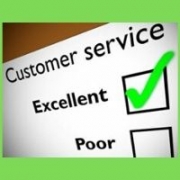Most companies today recognize the need to articulate their core values. Core values provide the compass that guides the business. While business strategies should constantly be evolving, core values, like true North, don’t change. In stormy times of stress and change (hello!) Core Values provide a secure anchor. They can remind us of who we are when we are considering compromising our principles. They can help us focus on what’s truly important. They can help us make decisions and set priorities. They can be used as a touchstone when coaching an employee and a measuring stick when hiring a new team member.
But where do Core Values come from? Jim Collins is one of the world’s experts on the importance of core values in organizations, having researched them extensively for his books “Good to Great” and “Built to Last.” He writes “… you cannot “set” organizational values, you can only discover them. Nor can you “install” new core values into people. Core values are not something people “buy in” to. People must be predisposed to holding them. Executives often ask me, “How do we get people to share our core values?” You don’t. Instead, the task is to find people who are already predisposed to sharing your core values. You must attract and then retain these people and let those who aren’t predisposed to sharing your core values go elsewhere. I’ve never encountered an organization, even a global organization composed of people from widely diverse cultures, that could not identify a set of shared values. The key is to start with the individual and proceed to the organization…”
Who should create your core values? Management teams or owners usually initiate the process of clarifying and identifying values, but as Collins points out, this can’t be a top-down activity. If Core Values are simply handed out to the team, they are often ignored or even ridiculed as more silly management-speak, or worse. (As the cynical Dilbert proclaims, “values are a type of emotional illusion common to children, idiots and non-engineers.”) Identifying Core Values is a process of discovery, and for that process to be relevant and resonant in the lives of your team members, it needs to involve as many of them as possible. Agreeing upon your most cherished Core Values is a ritual that, when properly facilitated, can bring all an organization’s members closer together. Articulating core values is not simply an exercise in word-smithing. Word-smithing is important, but it actually comes last.
How do you identify core values? We like to compare the process of identifying and articulating an organization’s values to diamond mining:
- We collect a lot of ore, filled with rough diamonds
- Together, we sift through the ore and carefully select the best gems
- We polish and cut the best gems
- We proudly set and “wear” our gems
How many Core Values are enough? Good management is a lot like parenting, according to business “growth guru” Verne Harnish of Gazelles (gazelles.com). He says, “have a handful of rules and repeat yourself a lot.” That “handful of rules” are your Core Values. Three to five concepts is more than enough for people to remember.
What if I don’t like the Values my team comes up with? It’s extremely rare to have the Core Values process deliver Values that are different from yours. Why? The people in your company ultimately reflect and agree with your true Core Values—that’s why they’re there. One important reason to work with a facilitator in this exercise is to ensure healthy balance in the Values. For example, when you talk about Core Values with your team, especially teams from hospitality and helping professions, expect the conversation to get fairly animated. Teams that deliver intensive customer service are highly interdependent. Positive interpersonal relationships are crucial to their happiness. Their values tend to focus on interpersonal relationships with one another.
The facilitator ensures that all stakeholders are strongly supported by at least one of the Core Values: employees, customers, and ownership all have slightly different needs and agendas. The “kumbaya” values of your team may not acknowledge the necessity of making money, for example. An easy way to describe this is to think about the “three relationships” each team member experiences in the organization:
- Relationships with co-workers
- Relationships with customers
- Relationship with the business
Rather than establish these limitations at the beginning, we try to encourage a very unstructured discovery of personal values as they relate to work. Too many rules early in the process can restrict the free flow of conversation and ideas. Instead ask
- What’s important to you at work?
- Why do you work here?
- What’s usually happening when you’re having fun at work?
- What do you like most about your coworkers?
- What do you like most/least about the organization?
- What behavior do you think expresses a true professional?
If you’d like help articulating and capturing your company’s core values, we’d be happy to help. Contact us at consultants@wynnebusiness.com, subject: Core Values! And we’ll figure out if it’s something you can do yourself or if you might need to have your process facilitated by an expert. Either way, prepare to see your team in a whole new light. And prepare to keep that light burning bright for a long time!
 The right time to run a business is . . . well there never is a perfect time.
The right time to run a business is . . . well there never is a perfect time.


 Welcome to the new year!
Welcome to the new year!

